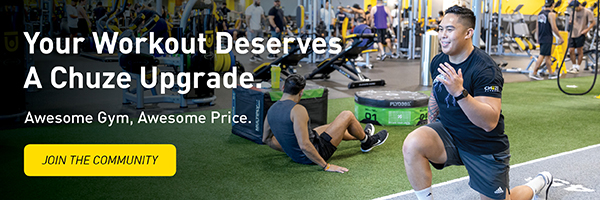How to Help Sore Muscles: The Ultimate Recovery Guide
Muscle pain is a universal experience. Whether you’re a seasoned athlete or just dipped your toes into the world of fitness, you’ve likely encountered those pesky sore muscles at some point. Those aches and pains can feel like an unwelcome guest at your personal wellness party. In this ultimate recovery guide, we’ll delve deep into the science of muscle soreness and arm you with the knowledge and tools you need to conquer it. Get ready to say goodbye to muscle soreness, and let’s embark on this journey to a pain-free you!
Understanding Muscle Soreness
Picture this: You’ve just crushed a tough workout. You feel invincible, but the next morning, you wake up feeling like you’ve been hit by a freight train. What gives? It’s called muscle soreness, and it’s your body’s way of reminding you that it’s working hard to get stronger.
Why do muscles get sore?
Muscle soreness, also known as delayed onset muscle soreness (DOMS), is that burning, aching sensation you feel in your muscles after an intense workout. It’s a sign that your muscles have experienced tiny tears and inflammation. Don’t worry; it’s all part of the process! This muscle damage is necessary for your muscles to rebuild and grow stronger.
Repairing microscopic tears
This microscopic damage plays a pivotal role in both muscle gain and muscle soreness. When we engage in strenuous physical activities, especially resistance or strength training exercises, our muscles are subjected to significant stress. Eccentric exercises, in particular, are a common culprit of DOMS. Think of lowering a weight slowly during a bicep curl. This stress can lead to tiny, microscopic tears in the muscle fibers.
While these tears might sound detrimental, they are a crucial part of the muscle-building process. As our muscles repair these micro-injuries, they become stronger and more resilient. This phenomenon is often referred to as muscle hypertrophy. The body adapts to the stress it experiences during exercise by repairing and reinforcing the damaged muscle fibers, resulting in increased muscle mass and strength over time.
However, the inflammation and repair process triggered by these tears can cause discomfort and pain, typically felt 24 to 72 hours after intense exercise. While muscle soreness is a temporary inconvenience, it signifies that your muscles are adapting and growing stronger. According to the Mayo Clinic, muscle soreness should go away naturally after a few days, but proper nutrition, hydration, and recovery techniques can also help mitigate this soreness while maximizing the benefits of muscle gain through the repair and growth of muscle fibers.
Natural Remedies for Sore Muscles
Hot or Cold Therapy? The Battle Begins
When soreness strikes, you have a choice: hot or cold therapy. Both are champions in their own right. Heat therapy relaxes muscles, increases blood flow, and soothes aching muscles. A warm bath or heating pad can work wonders in alleviating muscle soreness. On the flip side, cold therapy, in the form of an ice pack or ice bath, reduces inflammation and numbs the area. The cold temperature reduces inflammation by constricting your blood vessels and, therefore, blood flow.
Stretch Your Worries Away
Ah, the sweet relief of a good stretch! Gentle stretching is your ticket to muscle nirvana. Incorporate gentle stretching exercises into your routine to improve flexibility and alleviate tightness. Stretching increases blood flow to the muscles, promoting faster recovery. However, remember to be gentle while stretching; if you feel pain, you’ve stretched too far.
The Magic Touch of Massage
Nope, it’s not just a luxury reserved for spa days. Massage can be a game-changer in your muscle recovery arsenal. It increases circulation, releases tension, and helps flush out waste products from your muscles. Who knew a bit of kneading could feel so heavenly?
If a massage is out of your budget, foam rolling is a great, budget-friendly alternative. Like a massage, it helps increase circulation and reduces inflammation, but you can do it on your own, wherever is most convenient for you.

Best Practices for Muscle Soreness
Listen to Your Body
Here’s a golden rule: listen to your body. If your muscles are shouting, “Hey, we need a break!” then heed the call. Pushing through pain can lead to more soreness or overuse injuries, as constant strain on muscles and joints without adequate recovery can result in chronic pain, inflammation, and reduced performance. Rest is essential. So, when in doubt, take a rest day.
Fuel Your Recovery
Nutrition plays a crucial role in muscle recovery. Load up on foods rich in amino acids, the building blocks of muscle tissue. A diet rich in protein provides your body with the amino acids it needs to rebuild those hard working muscles. Lean proteins like chicken, fish, and beans are your new best friends.
Carbohydrates also play a crucial role in alleviating muscle soreness. When we engage in strenuous physical activities, our muscle glycogen stores, which are essentially stored carbohydrates, get depleted. Replenishing these glycogen stores through carbohydrate consumption helps provide the energy needed for muscle recovery and repair. Incorporating complex carbohydrates like whole grains, fruits, and vegetables into your post-workout nutrition can promote faster recovery and minimize the discomfort associated with muscle soreness.
Hydration: It’s Non-Negotiable
Muscles are thirsty creatures. Staying hydrated is essential for optimal muscle function and recovery as it supports nutrient delivery, waste removal, tissue integrity, and overall muscle health. It’s an often overlooked but essential aspect of any effective recovery strategy.
Water plays a pivotal role in the transportation of essential nutrients to muscle cells. When adequately hydrated, your body can efficiently deliver vital nutrients such as amino acids, glucose, and electrolytes to the muscles, promoting the repair and growth of muscle fibers damaged during exercise.
Make sure you’re sipping water throughout the day to alleviate nagging muscle soreness.
Muscle Recovery Techniques
Rest: Your Body’s Reset Button
When it comes to muscle recovery, rest is your best friend. During deep sleep stages, the body releases growth hormones, crucial for repairing and building muscle tissues. Moreover, adequate sleep enhances the body’s ability to reduce inflammation, allowing for faster recovery and minimizing muscle soreness. Aim for 7-9 hours of quality sleep each night.
Hydration Redux
Yes, we’re harping on about hydration again because it’s that important. Hydration redux, or maintaining proper hydration levels, is crucial for alleviating muscle soreness. Proper hydration supports blood flow, which is crucial for delivering oxygen and nutrients to your muscles. When well-hydrated your body efficiently removes waste products and inflammatory substances from muscle tissue too. This process helps reduce inflammation, preventing excessive soreness and expediting the recovery process. Basically, staying hydrated is a simple yet powerful way to ease post-workout discomfort and enhance muscle recovery.
Prevention Strategies
Warm-Up and Cool Down
Don’t skip the warm-up and cool down! Warming up primes your muscles for action by gradually elevating your heart rate and increasing blood flow to muscles. On the other hand, cooling down post-workout helps gradually lower your heart rate and reduce muscle tension, aiding in recovery and reducing the risk of post-exercise soreness.
Proper Technique Is Key
Using the correct technique during workouts is paramount. It ensures that you target the intended muscle groups effectively, minimizing the risk of strain or injury. Proper form also optimizes the muscle’s engagement, promoting growth, and strength development while reducing the likelihood of post-workout soreness and long-term damage. If you’re unsure about an exercise, consider consulting a physical therapist or an athletic trainer.
Active Recovery: Move It, Don’t Lose It
Contrary to what you might think, staying active during recovery can speed up the process. Engage in gentle stretching and low-intensity exercises to keep the blood flowing without overtaxing your muscles. Additionally, these activities help reduce muscle stiffness and prevent the buildup of lactic acid, accelerating the healing process and minimizing soreness after intense workouts.
Final Thoughts
In the battle against muscle soreness, you now wield an arsenal of knowledge and strategies. Remember, you’re not alone in this journey to recovery. Embrace the discomfort, for it’s a sign of progress. With patience, care, and a dash of self-love, you can conquer sore muscles and emerge stronger than ever.
Share this article with your fellow fitness enthusiasts and let them in on the secret to sore muscle relief. And don’t forget to explore our website for more tips on muscle strength, physical health, and mental well-being.
Sources:
¹Mayo Clinic. Muscle Pain. https://www.mayoclinic.org/symptoms/muscle-pain/basics/definition/sym-20050866
²Science Direct. Thermotherapy. https://www.sciencedirect.com/topics/nursing-and-health-professions/heat-therapy#:~:text=Thermotherapy%20(heat)%20is%20used%20to,promote%20vasodilatation%2C%20and%20accelerate%20healing.
³Cleveland Clinic. Can Ice Baths Ease My Sore Muscles? https://health.clevelandclinic.org/can-ice-baths-ease-my-sore-muscles/
⁴Mayo Clinic. Fitness Streching and Flexibility. https://www.mayoclinic.org/healthy-lifestyle/fitness/basics/stretching-and-flexibility/hlv-20049447
⁵Mayo Clinic. Benefits of Massage Therapy. https://www.mayoclinichealthsystem.org/hometown-health/speaking-of-health/benefits-of-massage-therapy
⁶Cleveland Clinic. Sleep. https://my.clevelandclinic.org/health/body/12148-sleep-basics
⁷Billi. Why Rehydrating Effectively After a Workout is Essential. https://www.billi-uk.com/news/hydrating-effectively-after-exercise/
⁸Everyday Health. 7 Health Benefits of Water Backed by Scientific Research. https://www.everydayhealth.com/water-health/water-body-health.aspx

Reviewed By:
Ani is the Vice President of Fitness at Chuze Fitness and oversees the group fitness and team training departments. She’s had a 25+ year career in club management, personal training, group exercise and instructor training. Ani lives with her husband and son in San Diego, CA and loves hot yoga, snowboarding and all things wellness.
The post How to Help Sore Muscles: The Ultimate Recovery Guide appeared first on Chuze Fitness.
*** Kindly back our sponsor *** |
| [TAG2]
Image Credit: Carmela Hill / AuthorsUSA.com |
By: Martin Hernandez
Title: How to Help Sore Muscles: The Ultimate Recovery Guide
Sourced From: chuzefitness.com/blog/how-to-help-sore-muscles-the-ultimate-recovery-guide/
Published Date: Wed, 06 Dec 2023 20:35:17 +0000
 HealthWellnessFitnessBeautyVideosPrivacy PolicyTerms And Conditions
HealthWellnessFitnessBeautyVideosPrivacy PolicyTerms And Conditions
